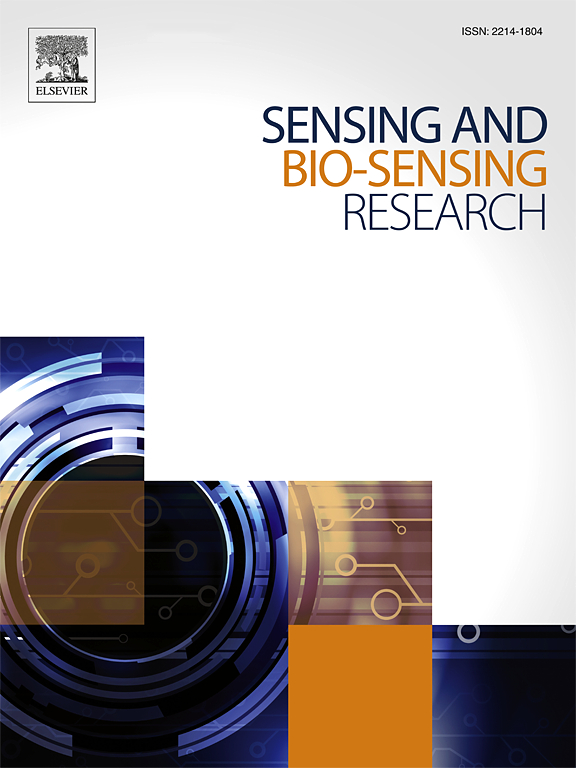Wearable and wireless sEMG acquisition system based on the Internet of Medical Things
IF 4.9
Q1 CHEMISTRY, ANALYTICAL
引用次数: 0
Abstract
The use and development of wearable systems, including the Internet of Things, have become very relevant in recent years. This type of technology has gained popularity in biomedical applications thanks to its advantages in remote patient monitoring and rehabilitation. The aim of the above is to generate greater access to health services, create personalized systems adapted to the needs of patients, and reduce the necessity of having specialized personnel constantly available while evaluating users. Therefore, the present work developed a portable and wireless surface electromyography (sEMG) system based on the Internet of Medical Things, named MUSS, for Muscle Sensing System. This system has eight wireless modules for biosignal recording, online acquisition, and sEMG signal processing. The system presents an innovative circuit that uses Wi-Fi communication for the online adjustment of sEMG parameters, such as gain, signal offset, and the implementation of digital filters to perform tests based on the application’s needs. Finally, the developed software allows the connection to the Cloud for remote control, information exchange between specialized personnel, and Cloud storage for greater accessibility. The system comparison with different commercial devices and a clinical device demonstrated the usability and advantages of the device developed, considering features such as signal-to-noise ratio, frequency peaks, energy, among others.
基于医疗物联网的可穿戴式无线肌电信号采集系统
近年来,包括物联网在内的可穿戴系统的使用和发展变得非常重要。由于其在远程患者监测和康复方面的优势,这种类型的技术在生物医学应用中得到了普及。上述工作的目的是增加获得保健服务的机会,建立适应病人需要的个性化系统,并减少在评价用户时经常配备专业人员的必要性。因此,本工作开发了一种基于医疗物联网的便携式无线表面肌电图(sEMG)系统,命名为MUSS,用于肌肉传感系统。该系统有8个无线模块,分别用于生物信号的记录、在线采集和表面肌电信号的处理。该系统提出了一种创新电路,利用Wi-Fi通信在线调整表面肌电信号参数,如增益、信号偏移,并实现数字滤波器,根据应用需求进行测试。最后,开发的软件允许连接到云进行远程控制,专业人员之间的信息交换,以及云存储以获得更大的可访问性。该系统与不同的商用设备和临床设备进行了比较,展示了该设备的可用性和优势,考虑了信噪比、频率峰值、能量等特征。
本文章由计算机程序翻译,如有差异,请以英文原文为准。
求助全文
约1分钟内获得全文
求助全文
来源期刊

Sensing and Bio-Sensing Research
Engineering-Electrical and Electronic Engineering
CiteScore
10.70
自引率
3.80%
发文量
68
审稿时长
87 days
期刊介绍:
Sensing and Bio-Sensing Research is an open access journal dedicated to the research, design, development, and application of bio-sensing and sensing technologies. The editors will accept research papers, reviews, field trials, and validation studies that are of significant relevance. These submissions should describe new concepts, enhance understanding of the field, or offer insights into the practical application, manufacturing, and commercialization of bio-sensing and sensing technologies.
The journal covers a wide range of topics, including sensing principles and mechanisms, new materials development for transducers and recognition components, fabrication technology, and various types of sensors such as optical, electrochemical, mass-sensitive, gas, biosensors, and more. It also includes environmental, process control, and biomedical applications, signal processing, chemometrics, optoelectronic, mechanical, thermal, and magnetic sensors, as well as interface electronics. Additionally, it covers sensor systems and applications, µTAS (Micro Total Analysis Systems), development of solid-state devices for transducing physical signals, and analytical devices incorporating biological materials.
 求助内容:
求助内容: 应助结果提醒方式:
应助结果提醒方式:


